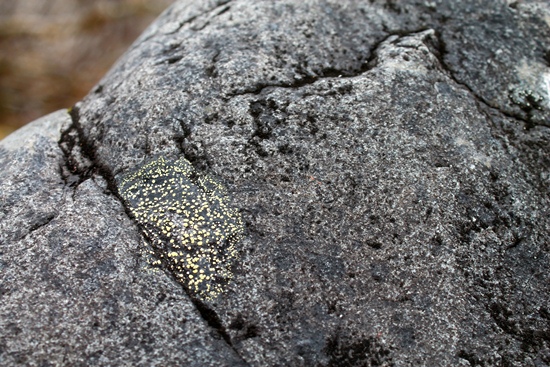After a week of interpretive training plus another two weeks of prep work and shadowing the more experienced rangers, I'm excited to be leading my own programs. Though similar to the school lessons I've done with the education department, there are a few things about interpretation that take a little getting used to.
First, interpretive programs don't have a set curriculum. Kids come to us with school groups and we try to impart a particular subset of knowledge to everyone in the group, no matter who leads the lesson. In contrast, I get to talk about whatever I want on an interpretive program. As long as I can tie it all together with a common theme, which brings me to the second difference.
We're not necessarily here to teach people about the park so much as help them experience it. Obviously, I want them to learn a few things about the natural resources while they're here, but it's more important that visitors feel a connection to what they see. For example:
Lichens are a mutualistic symbiosis between a mycobiont (a fungus) and a phytobiont (an algae or cyanobacteria or both). They are some of the first organisms that colonize the bare rock left behind by a retreating glacier. The fungus breaks down rock into nutrients, which it transfers to the phytobiont. In return, the phytobiont perform photosynthesis and provides the fungus with carbohydrates for energy.

NPS Photo: Max Odland
Great. So what? Now let's say I have a theme about lessons we can learn from nature:
Lichens not only persist, but also flourish in some of the harshest, most barren places on the planet. They can only do this through an extraordinary amount of cooperation between two (or three) drastically different partners, each nurturing the other where they would likely die on their own. We all go through harsh points in life. Next time you find yourself in one, try to find your fungus. (Or algae. Or cyanobacteria.).
Which one made you care more about lichens?
Honestly, my head has been spinning a bit the past few days with pieces of information, interpretive techniques, and themes. It was a relief to get out on the trails and give my first programs, and I'm looking forward to giving more throughout the season.
I've walked the trails, chosen a theme, and my program is taking root like the mycobiont in a lichen. Bring it on, summer.
